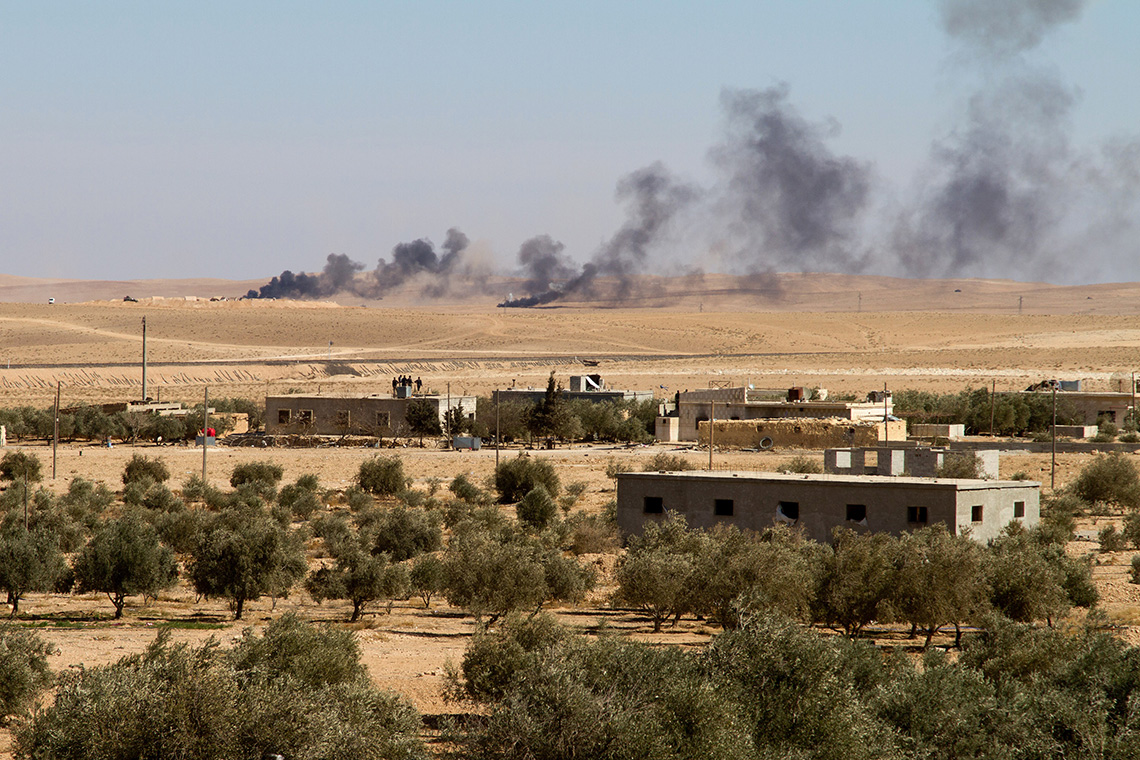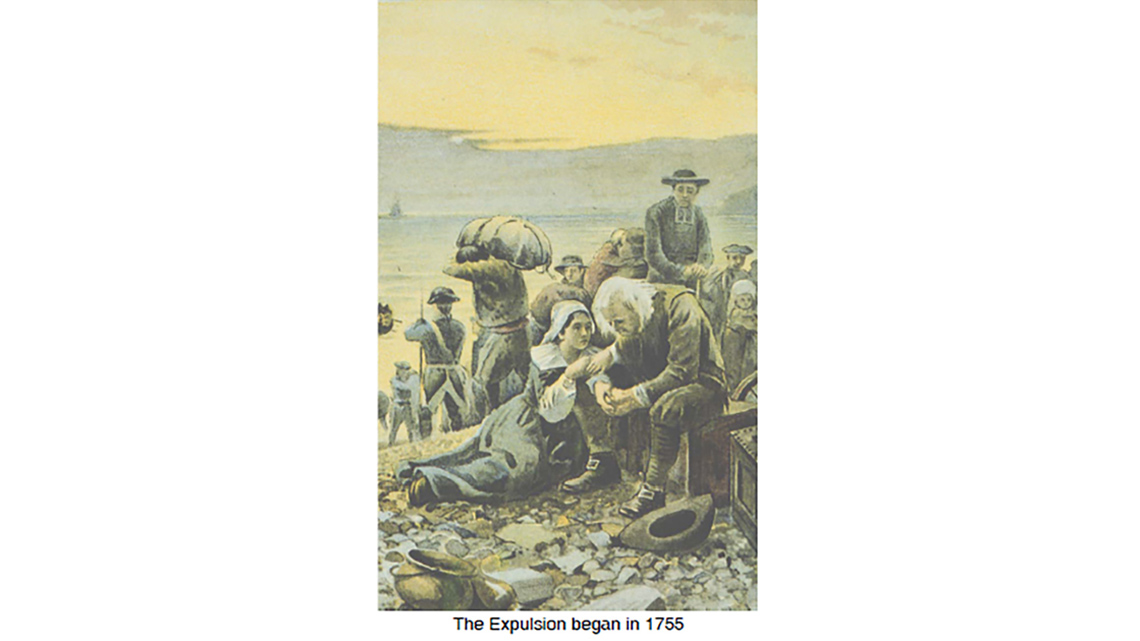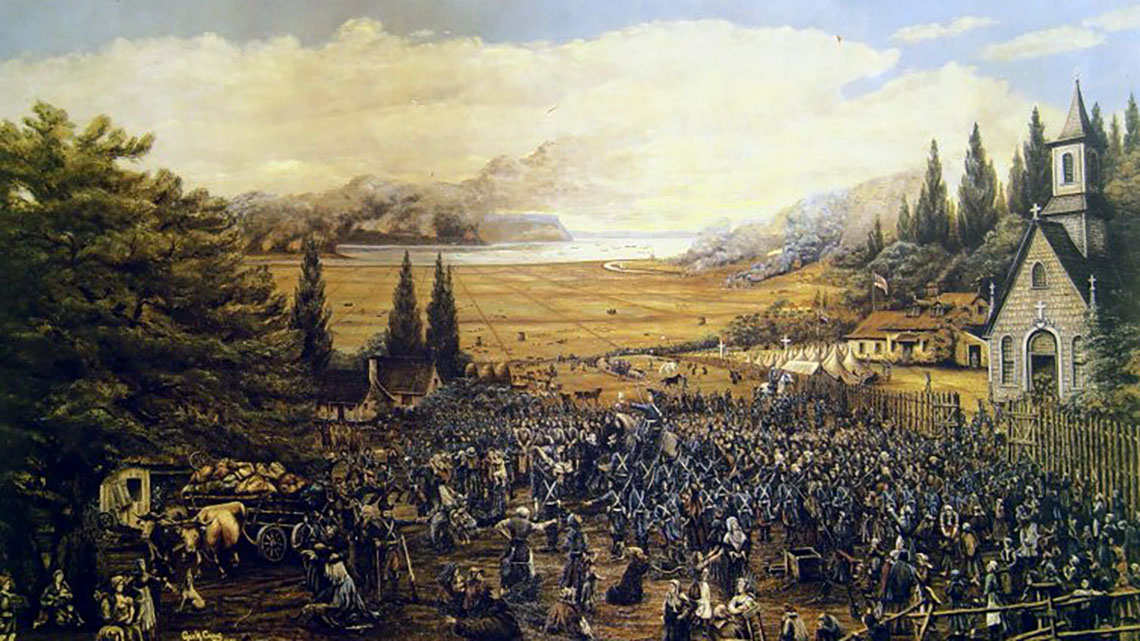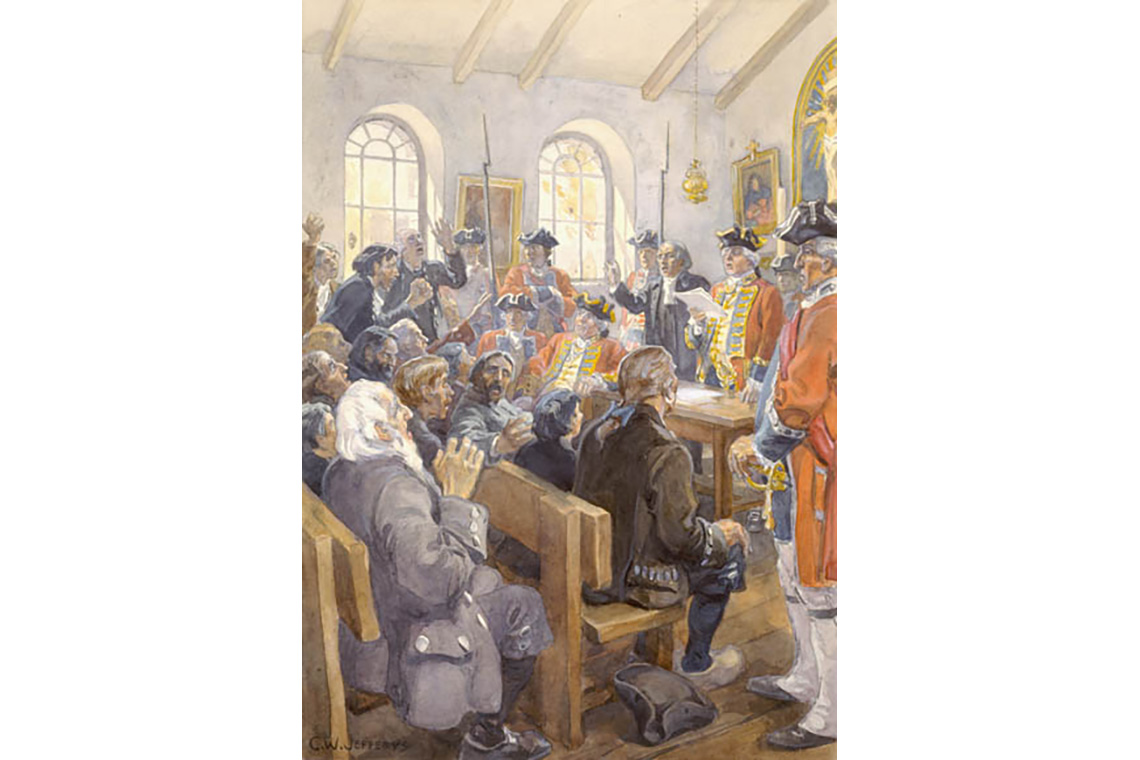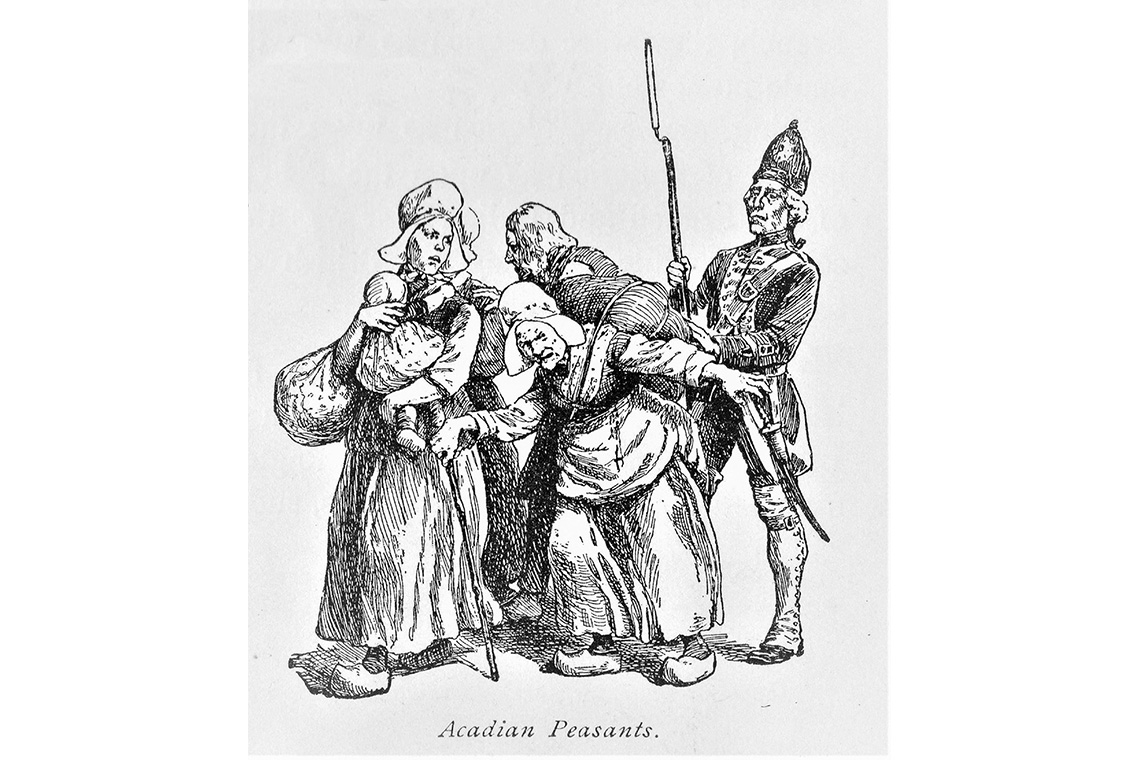Minds On
Why do people move?
When people move to a different country, sometimes it’s because they chose to relocate and sometimes, they have no other choice. Examine the following images, and create a list of reasons someone would choose to move and a list of reasons someone would be forced to relocate.
Record your thoughts using the Why Do People Move Chart in your notebook, in the following fillable and printable document, or in a method of your choice. If you would like, you can use speech-to-text or audio recording tools to record your thoughts.
Press the ‘Activity’ button to access the Why Do People Move Chart.
What do you think the word ‘displacement’ means? Record your ideas orally, digitally, in print, or in a method of your choice.
Press ‘Answers’ to access a sample response to compare your answers to.
This chart shows some of the possible answers you could have recorded. You may have a few different ideas.
|
People choose to move because … |
People are forced to move because … |
|
be closer to family new job moving in with significant other need more or less space want a “change of scenery” (for example, moving out of the city and into the country) the commute is too long specific school or neighbourhood for kids |
can no longer afford home poverty violence political instability or war natural disaster looking for a safe space |
Displacement means forced or involuntary movement of a person or people away from their home or region.
Action
Task 1: Leading up to expulsion
The Acadians were immigrants from France in the early 1600s who settled in the colony of Acadia, present-day Nova Scotia, New Brunswick, and Prince Edward Island.
Press ‘Definition’ to access the definition of an immigrant.

A map of the east part of modern-day Canada with the location of where the Acadians dwelled shaded in another colour. This is along the eastern coast of Canada, where Nova Scotia, New Brunswick and Prince Edward Island are currently located.
While the French were building and expanding settlements in New France, the British were also doing the same. The Acadians began trading goods with the British, which upset the French as they had been long ignored by the Acadians. In the spring, ships would arrive and the Acadians would give the British livestock, wheat, fur pelts, and feathers, in exchange for molasses, brandy, sugar, and manufactured goods. Both the French and the British wanted control of the Acadian lands to gain access to the St. Lawrence River, fur trade, and cod fishing.
Press the year(s) to explore details of significant events that led up to the expulsion of the Acadians
Treaty of Utrecht
Acadians became British subjects and those who wanted to side with the French were given a year to leave.
Knowledge check
Now that you have explored the lead up to the expulsion of the Acadians, use the following multiple choice questions to check your understanding.
Task 2: Expulsion
As you continue to explore the expulsion of the Acadians, it is important to consider multiple perspectives: the Acadians, the Indigenous, the French, and the British. Let’s explore these four perspectives.
The Acadian perspective
Most Acadians wanted to remain neutral in the event of a war between the French and the British. They were given two choices: stay in Nova Scotia and become British subjects or go to French territory and give up their land. However, most Acadians wanted an alternative option that was not presented. They wanted to be able to stay on their lands and not remain loyal to either party, holding a neutral stance. This did not work for the British or the French and the Acadians felt threatened from each side.
In September of 1755, Acadian men (over the age of 10) were instructed to meet at the Church where they were delivered shocking news from the British. All Acadians were to be transported out of the province. Many men were unexpectedly seized from the Church by the military and imprisoned. When they refused to go, the British threatened their families and burned down their houses and crops. Women and children were loaded onto ships to be scattered among the thirteen colonies, as the British didn’t want them escaping to the Fortress of Louisbourg with the French. Many Acadians died at sea from disease, starvation, or capsized boats. Those who survived were dropped off at random spots along the coast with nothing to sustain them. When the Acadians reached the colonies, they were diseased and poor. No one welcomed these refugees. They were unwanted in their new land. Between 1755 and 1763, over 10,000 Acadians were displaced.
Explore the following images that depict the Acadians being displaced from their homes.
Acadian Expulsion: This illustration shows a background of water and several people, men and women, on the shore. A man sits with his shoulder slumped and his hat on the ground beside him, and a woman holds his arm, also sitting on the ground beside him. A man in the background is carrying belongings over his shoulder and walking towards the water. Other men in the background are carrying weapons. Expulsion of the Acadians, Lewis Parker: This painting shows water in the background with three ships with sails heading towards the land. There are also several canoes in the water, closer to the shoreline. Several people are lined up to get on the canoes. Men in red uniforms stand and watch. The Expulsion of the Acadians, 1893, George Craig: This painting shows Grand-Pré in September 1755. The British officer on horseback is holding the orders for the deportation. The Acadian men and boys are prisoners in the church awaiting ships to deport them to the southern English colonies.
The Indigenous perspective
Before you begin, press on the following terms to familiarize yourself with the terminology utilized to refer to the specific Indigenous peoples and Indigenous land discussed in the following section.
The Acadians that settled in Mi’kma’ki during the 1600s developed a mutual relationship with the Mi’kmaw people. They would not have survived if it wasn’t for the Mi’kmaw people teaching them about the land. The Mi’kmaq taught the Acadians where and how to fish during particular seasons and shared their knowledge of how to live off the land. They also engaged in trade with the Acadians, which made the relationship mutually beneficial. Historical records indicated that Acadians originally requested permission from the local Mi’kmaq prior to establishing settlements along the water. The Mi’kma’ki worked with and protected Acadian settlers who had been deported from their home country. Unfortunately, this relationship did not last when Acadian lands were taken over by British colonizers who established permanent fishing settlements without the permission of the Mi’kmaq.
The French perspective
During this time, the French wanted to maintain good relationships with the Acadians. The French knew about the Treaty of Utrecht and that the Acadians had technically become British subjects, but they continued to try to convince the Acadians to join their forces. The French employed agents and missionaries to keep the Acadians faithful to the French religion and church.
In 1749, the French built the Fortress of Louisbourg as a mighty military base. It was designed to watch and protect the Gulf of the St. Lawrence and to guard the fishery. During this time, the French again tried to convince the Acadians to join forces with them to fight the British. When they realized the Acadians wanted to remain neutral, they devised another plan. The French wanted to keep the Acadians where they were so that they could continue to create resources and strengthen the area for French invaders.
Source: Ferguson, Bruce. “The Expulsion of the Acadians.” The Dalhousie Review, vol. 35, no. 2, pp. 127-135., dalspace.library.dal.ca/bitstream/handle/10222/58645/ dalrev_vol35_iss2_pp127_135.pdf?sequence=1&isAllowed=y.
The British perspective
In 1755 the British were becoming more and more concerned about the Acadians and whether they could be trusted. They wondered if they would really remain neutral in a war between the British and French. At the same time, more French soldiers were being positioned at the fortress built in Louisbourg. The British had been in disputes with the Mi’kmaq First Nations as they defended the French. The British were concerned with the close connections between the Acadian's religion and the French religion. In June of 1755, the British asked the Acadians (again) to take an oath of loyalty to them. When they refused, the British governors imprisoned them and gave the order of deportation. A New Englander, Charles Morris, had devised a plan to surround Acadian churches, capture as many men as possible, and burn down their houses and crops. Acadians fled in all different directions and the British would continue to hunt them down for years to come.
Source: Marsh, James. “Acadian Expulsion (the Great Upheaval)."The Canadian Encyclopedia, 15 July 2015, www.thecanadianencyclopedia.ca/en/article/the-deportation-of-the-acadians-feature.
Analyse the following images and descriptions. Take note of what the image and description are sharing and whose perspective this image may be sharing. What clues helped you determine the perspective?
Expulsion Order Read to Acadians, Charles Jeffreys: In this painting there is a room that is full of people. There are several people sitting down and exchanging looks. There is a man at the front of the room reading off a piece of paper. Acadians Expelled from Nova Scotia: In this sketch there is a British soldier wearing military clothing and carrying a pick fork. He is standing tall. There are two other men and one woman who is carrying a baby. They have bags and belongings with them. They have a disgruntled look on their face as they look back at the British soldier. Ships Take Acadians Into Exile, Claude T. Picard: This painting shows a group of 15 Acadians sitting in the grass as British boats drive into the bay to take the Acadians away. Some are sitting on their suitcases. Some are hugging and others are sitting on rocks with their heads, holding small children or babies. There are more groups of Acadians in the background of the image, closer to the bay. Some are in boats; others are on the beach preparing to load the boats.
Analyze the painting
Choose one of the paintings depicted in the previous section to examine further.
Whose perspective do you think the painting was painted from? Why? What information is being shared in the painting?
Press ‘Hint’ to access an additional prompt to help you answer the question.
Reflection
In a method of your choice, answer the following reflection question. Use evidence from your learning in your response.
What have you learned about the expulsion of the Acadians from examining different perspectives?
Press ‘Hint’ to access an additional prompt to help you answer the question.
Do you think all of the perspectives are equally valid? Why or why not?
Press ‘Hint’ to access an additional prompt to help you answer the question.
Task 3: Modern displacement
Displacement is still something that occurs in our modern world. The following video details the experience of the Alsalamat family who arrived in Northern Ontario as refugees.
Reflect
What challenges did the Alsalamat family experience arriving in Canada?
Consolidation
Task 1: Compare and contrast

Compare and contrast the displacement of the Acadians and the displacement of Syrian refugees in modern-day Canada. Use the following prompts to help guide your comparison:
- Why were these groups forced out of their communities?
- What challenges did each group face when they were displaced?
- What is similar about each group’s experience being displaced?
- What is unique about each group’s experience as a refugee?
Complete the Venn Diagram in your notebook, in the following fillable and printable document, or in a method of your choice. If you would like, you can use speech-to-text or audio recording tools to record your thoughts.
Press the ‘Activity’ button to access Venn Diagram.
Task 2: Cause and consequence
Create a list of Causes and Consequences of the Expulsion of the Acadians in your notebook, in the following fillable and printable document, or in a method of your choice. If you would like, you can use speech-to-text or audio recording tools to record your thoughts.
Press the ‘Activity’ button to access Causes and Consequences of the Expulsion of the Acadians.
Think about it further
What were some of the unintended consequences of expelling the Acadians?
Press ‘Hint’ to access to reveal another question to prompt your thinking.
Reflection
As you read the following descriptions, select the one that best describes your current understanding of the learning in this activity. Press the corresponding button once you have made your choice.
I feel...
Now, expand on your ideas by recording your thoughts using a voice recorder, speech-to-text, or writing tool.
When you review your notes on this learning activity later, reflect on whether you would select a different description based on your further review of the material in this learning activity.
Press ‘Discover More’ to extend your skills.
Discover More

